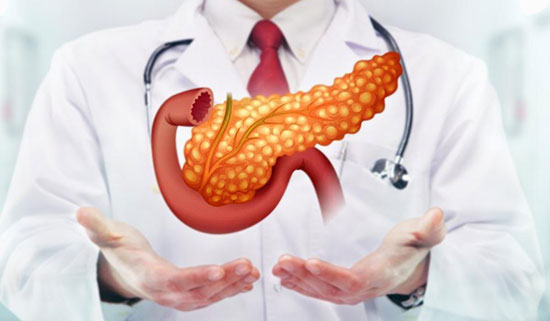About Pancreatitis

The pancreas is a gland located in the upper part of the abdomen. It produces two main types of substances: digestive juices and digestive hormones. Inflammation of the pancreas is termed pancreatitis and its inflammation has various causes. Once the gland becomes inflamed, the condition can progress to swelling of the gland and surrounding blood vessels, bleeding, infection, and damage to the gland. There, digestive juices become trapped and start "digesting" the pancreas itself. If this damage persists, the gland may not be able to carry out normal functions. Pancreatitis may be acute (new, short-term) or chronic (ongoing, long-term). Either type can be very severe, even life-threatening. Either type can have serious complications.
• Acute pancreatitis Acute pancreatitis usually begins soon after the damage to the pancreas begins. Attacks are typically very mild, but about 20% of them are very severe. An attack lasts for a short time and usually resolves completely as the pancreas returns to its normal state. Some people have only one attack, whereas other people have more than one attack, but the pancreas always returns to its normal state unless necrotizing pancreatitis develops and becomes life-threatening.
• Chronic pancreatitis begins as acute pancreatitis. If the pancreas becomes scarred during the attack of acute pancreatitis, it cannot return to its normal state. The damage to the gland continues, worsening over time.
What are the symptoms?
The most common symptom of acute pancreatitis or pancreas pain is abdominal pain. Almost everybody with acute pancreatitis experiences abdominal pain.
- The pain often begins or worsens after eating.
- The pain typically lasts a few days.
- The pain may feel worse when a person lies flat on his or her back.
Pancreatitis from alcohol use usually occurs in individuals who have been long-term alcohol drinkers for at least five to seven years. Most cases of chronic pancreatitis are due to alcohol abuse. Pancreatitis is often already chronic by the first time the person seeks medical attention (usually for severe pain).
Gallstones form from a buildup of material within the gallbladder, another organ in the abdomen (please see previous illustration). A gallstone can block the pancreatic duct, trapping digestive juices inside the pancreas. Pancreatitis due to gallstones tends to occur most often in women older than 50 years of age.

